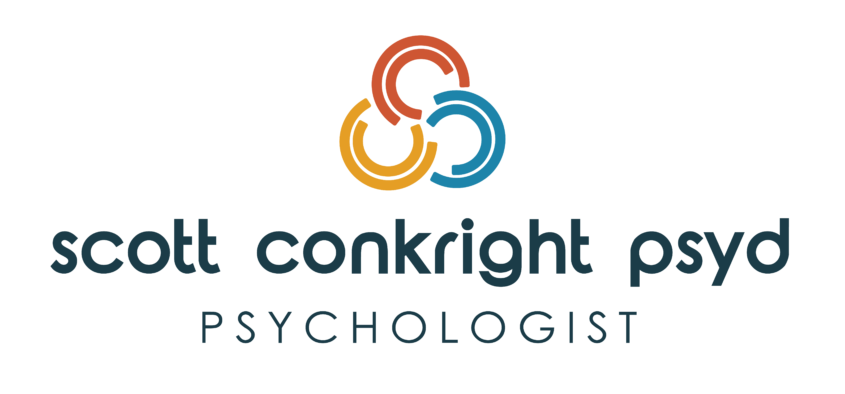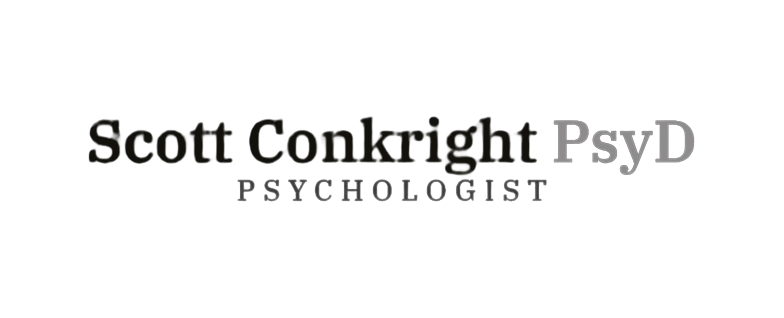Decoding Love: Navigating Feelings, Desire, and Connection

Have you ever wondered why a simple ‘like’ on social media or a heartfelt comment can brighten your day? Why do we yearn for genuine connections despite the unpredictable rhythms of our daily lives? Dive with me into the fascinating realm of Affect Relational Theory as we explore the profound concept of love, not merely as a transient emotion but as the ultimate driving force behind our existence. This journey isn’t solely academic; it’s a deep dive into the essence of our desires and how they shape our interactions, especially in this digital era, where every heart icon and every comment carries significant weight.
The primary force propelling us through life is the pursuit of being loved. But let’s peel back the layers of this desire. When you scroll through your social media feed and notice that little heart icon light up, there’s something more at stake than mere digital acknowledgments, right? We’re tapping into something fundamental to our human condition.
Here’s where Affect Relational Theory, a framework I’ve dedicated years to refining, sheds light on our inner workings. At the crux of our behavior is the quest to feel enjoyment, to be loved, and to forge meaningful connections. When you share a snapshot of your life online, what you’re genuinely seeking extends beyond mere attention; you’re striving for a connection, a validation that someone out there understands and values you. You yearn to be the focal point of someone’s interest and enjoyment—to experience genuine love. This drive goes beyond mere ego; it’s a fundamental human need critical to crafting a fulfilling life.
Now, let’s address the concept of ‘lack’—a term that resonates deeply within our psyche, molded by the ‘Other’: our family backgrounds, societal norms, and the people we encounter. Our entire existence is essentially a journey to bridge this internal void, a chasm sculpted by our formative experiences and the expectations placed upon us by society. The likes and affirmations we receive on social media act as temporary salves for this void. They allow us to feel noticed, acknowledged, and validated.
Yet, this craving for validation is insatiable, a never-ending quest because our true longing transcends mere affection. We are searching for a mirror, a reflection that fills the emptiness within, seeking validation of our existence and essence through others’ eyes. This relentless pursuit shapes our interactions, driving us to seek and spread love and validation.
By intertwining these concepts—the innate human inclination towards interest and enjoyment and the learned nature of our desires—we uncover the profound motivations behind our quest for love. Social media becomes a stage for this intricate psychological ballet, where each post, like, and comment represents our effort to fill the existential gap within us. Yet, this digital engagement is more than a mere exchange; it’s a reciprocal act of giving and receiving enjoyment and interest, fulfilling the same deep-seated desires within others.
This ongoing cycle of seeking and offering love and validation fosters a dynamic interplay that captivates us and forges deep, authentic connections. It unveils the complex tapestry of feelings, expectations, memories, and sensations that emerge from our innate need to adapt and connect. It highlights the beautiful, uniquely human realization that love is not just an emotion but a foundational element of knowledge and understanding, invariably linked to emotional connection.
As we navigate the digital landscape, remember that our online behaviors reflect profound human needs and desires: a quest for love, recognition, and a meaningful, joyful existence. Every interaction on social media reflects this age-old drama of connection and passion, playing out on the modern stage of our interconnected world.
Unraveling Love with Affect Relational Theory:
At the heart of Affect Relational Theory lies the premise that our emotions (or affects) are fundamental to our existence. They guide our decisions, pushing us towards interest and enjoyment and away from distress and pain. Within this framework, love transcends a mere feeling, an intricate narrative shaped by our reactions to various life experiences. It is entwined with the shadow of its opposite, shame, which arises from obstacles to positive experiences.
Psychotherapy can become a resource for those hindered by such obstacles, manifesting as depression or anxiety, which block the pathways to self-love and the ability to connect with others healthily. Essentially, the journey through therapy is to identify and dismantle these barriers, aiming to foster self-love, spread love to others, and welcome love from them. This deep-seated desire for love is a cornerstone of our motivations.
Diving Deeper into Interest-Excitement and Enjoyment-Joy:
The biologically based affect of Interest-Excitement is the initial spark that ignites our curiosity and engagement. This instant, innate reaction to something novel commands our attention, even if just momentarily. Driven by the allure of the new and unknown, this affect is the magnet that draws us into the world, seen clearly in social media. The initial hook, the captivating headline, or the eye-catching image makes us pause our endless scrolling.
But what transforms this fleeting attention into sustained engagement? That’s where emotion steps in, bridging the gap between a mere flicker of interest and lasting involvement. While affect grabs our attention with the promise of something new, the underlying emotions—rooted in our narratives and experiences—keep us hooked, transforming a momentary glance into a deeper connection.
Enjoyment-Joy represents the calming balance to the dynamic flare of Interest-Excitement. This affect engulfs us in waves of happiness and a profound sense of fulfillment, originating from environments marked by safety and nurturance. The gentle force behind our genuine smiles and the authentic, heartfelt connections enrich our lives, providing a window into the more peaceful realms of our emotional landscape.
While Interest-Excitement is the initial spark that captures our attention, Enjoyment-Joy is the sustaining glow that keeps our emotional engagement alive. It’s not just about the initial attraction or curiosity; it’s about the more profound contentment and satisfaction that comes from engaging with something or someone that resonates with our sense of well-being and belonging.
Expanding on Affect and Emotion:
But how does Enjoyment-Joy maintain our attention and deepen our connections, particularly in contrast to the gripping nature of Interest-Excitement? Creating a comforting and familiar emotional landscape reassures us and affirms our place in the world. While the new and unknown draw us in, the familiar and beloved hold us close, nurturing a sense of belonging and peace.
Social Media: An Illustration of Enjoyment-Joy:
Consider the role of Enjoyment-Joy in the context of social media. A heartfelt video shared by a friend, a family photo album updated with recent gatherings, or even a familiar song covered by a favored artist are conduits of Enjoyment-Joy. They resonate not because they are novel but because they echo our own experiences of joy and contentment. They connect us to a shared human experience, tapping into our collective narratives of happiness, nostalgia, and love.
For instance, engaging with a post celebrating a shared achievement, like a friend’s graduation or a family member’s birthday, extends beyond mere viewing. It elicits a shared joy that reinforces your connection to the person or group. This shared enjoyment is more than just a reaction; it’s a reaffirmation of relationships and values that are important to you. It’s Enjoyment-Joy in action, fostering a sense of community and belonging, making social media platforms spaces for exchange, collective celebration, and mutual recognition.
In this light, Enjoyment-Joy is not merely an affect; it’s a bridge to deeper emotional states, fostering long-term engagement and a profound sense of connection. It transforms social media from a platform of transient interactions into a space of lasting emotional significance, where shared moments of joy foster bonds beyond the digital realm.
Social Media: A Modern Stage for the Dance of Affects:
Consider the journey of a social media story or post. Initially, a stunning image or captivating update seizes your attention – that’s Interest-Excitement at work, drawing you in. But what keeps you returning, commenting, or engaging further? It’s the Enjoyment-Joy stemming from shared experiences, the resonance of shared happiness, and the warmth of familiar, comforting interactions.
For example, imagine a friend posting photos from a group trip you both experienced. The initial intrigue (Interest-Excitement) comes from visually capturing these moments, prompting memories and feelings. But as you scroll through the photos, leaving comments and exchanging memories, a more profound sense of joy and connection emerges (Enjoyment-Joy). The post becomes more than a digital interaction; it’s a shared space of mutual affection and memory, reinforcing the bonds of friendship and love. This is the essence of love in the social media arena – a continuous loop of discovery and satisfaction played out in social media’s public yet intimate arena.
Each affect – Interest-Excitement and Enjoyment-Joy – plays a crucial role in this dance. One initiates and renews our connections, ensuring that love remains dynamic and evolving. The other deepens and sustains these connections, ensuring they provide lasting fulfillment and security. Together, they form the bedrock of love, transforming individual moments of interaction into a continuous narrative of emotional engagement and connection.
Thus, as we navigate the ebb and flow of our online and offline lives, recognizing the interplay of these affects can help us understand the deeper motivations behind our actions and relationships. By embracing this dance, we can cultivate more meaningful connections enriched by the dynamic interplay of curiosity, joy, and, ultimately, love.
The Complex Interplay of Feelings, Thoughts, and Affects
Our feelings, thoughts, and affects are interwoven in a complex tapestry that shapes our experiences and reactions to the world around us. Central to this dynamic is the understanding that feelings often carry thoughts—thoughts that can be positive, negative, or neutral. These thoughts are not standalone entities; they are deeply influenced by our affective reactions, which trigger personal memories tied to the emotions birthed from both affect and experience.
The Primacy of Affective Reactions
Our emotions predominantly navigate our journey through life. Our initial responses to stimuli are instinctual and precede our rational interpretations. When we encounter a situation, our first response is affective—rooted in the basic, biologically driven affects such as enjoyment, interest, fear, or shame. This immediate reaction lays the groundwork for the emotional state that follows.
The emotions elicited by these affective reactions are intrinsically linked to our personal histories—each pulling threads from the past, weaving them into the present experience. For example, the joy triggered by a familiar song isn’t just about the melody itself but the tapestry of associated memories and feelings. Similarly, a sense of anxiety upon entering a new social setting might echo past experiences of discomfort or rejection.
Thoughts as Explanations for Feelings
Following the trail blazed by our affective reactions and the emotions they summon, our minds seek to understand what we feel. It is here that thoughts come into play. Our thoughts act as storytellers, providing explanations and context to the raw feelings stirred by our initial reactions. They are the stories we tell ourselves about why we feel a certain way, hammered together from our beliefs, past experiences, and perceptions.
However, it’s crucial to recognize that these thoughts, while influential, are interpretations—not direct reflections of reality. Our personal biases, past experiences, and individual worldviews shape them. For instance, feeling nervous before a public speech might summon thoughts of past embarrassments or failures, even if the current circumstances differ. On the other hand, excitement about an upcoming event might bring forth positive thoughts, reinforcing a cycle of anticipation and joy.
Affective Reactions and Memory Triggers
Our affective reactions do more than just shape our immediate emotional landscape; they also act as keys, unlocking the vaults of our memories. The emotions created from these reactions often have deep roots in past experiences, each carrying associated memories. When an affect is triggered, it doesn’t just bring forth a single memory or feeling but a cascade of related emotions and recollections.
These memories and emotions then inform our thoughts, coloring them with the hues of our past. If our historical experiences related to a particular affect are primarily positive, our thoughts will likely follow suit, painting our current feelings in an optimistic light. Conversely, if our past is peppered with negative experiences associated with that affect, our thoughts may skew towards the negative, tainting our current emotional state.
The Case for Understanding Our Affective Landscape
Understanding this intricate interplay between affects, emotions, thoughts, and memories is crucial for personal growth and emotional intelligence. Recognizing that our thoughts about our feelings are often just interpretations can empower us to question and, if necessary, reframe them. By acknowledging that our initial affective reactions might trigger a well-trodden path of memories and emotions, we can start to differentiate between past influences and present realities.
This awareness allows us to respond to new experiences more authentically, unburdened by the weight of unchecked past emotions and thoughts. It enables us to approach life with a clearer perspective, understanding that while our affective reactions might be the first word, they don’t have to be the last. In doing so, we can navigate our emotional worlds with greater clarity and purpose, making informed choices that align more closely with our current needs and desires rather than being unduly influenced by the shadows of the past.
Imagine working on a project that sparks your curiosity and passion (interest-excitement). As you dive in and start contributing, the positive feedback from your peers or bosses starts rolling in, making you feel recognized and valued (enjoyment-joy). This scenario isn’t just good for your career; it boosts your self-esteem, reinforcing your love for your job through what Lacan would call the ‘mirror stage.’ In this reflective process, it’s here that you start to see yourself as competent and successful, an image bolstered by the affirmations of those around you.
But here’s where Lacan’s theory kicks in—the role of the Imaginary. This isn’t just about daydreaming; it’s about the mental image you’ve built of yourself, which gets reinforced every time someone praises your work. Your professional identity starts to intertwine with this image, making those moments of recognition incredibly powerful.
However, suppose your workplace is a minefield of criticism, or you’re stuck in a loop of negative feedback (or worse, no feedback). In that case, it can trigger what Lacan would describe as a breakdown in this Imaginary order. Instead of seeing a capable, effective professional in the mirror, you might start to doubt your abilities, feeling anxious or fearful. This isn’t just about being sensitive; it’s about how consistent negative cues can distort that mental image you’ve built of yourself, challenging your narrative and emotional responses in your professional setting.
When you post something and receive likes and comments, it triggers the affect of interest-excitement. The positive feedback leads to activating the affect of enjoyment-joy, reinforcing your love for social interaction and validation. Your response to this feedback—whether craving more or feeling satisfied—reflects your scripts about self-worth and connection.
In a relationship, Interest-Excitement might come from learning about your partner, while Enjoyment-Joy could stem from shared experiences and mutual affection. If your emotional scripts around intimacy are healthy, this can deepen love. But if your scripts are based on past hurts or fears, they can shape how you perceive and react to love, sometimes in ways that don’t align with your thoughts or desires.
Understanding these dynamics can help you navigate their emotional worlds more effectively, recognizing that love is not just a feeling but a narrative interplay of interest and enjoyment and that our responses—shaped by our unique emotional scripts—can profoundly influence our experiences in work, social media, and personal relationships.
So, what’s in it for you? We unlock a deeper understanding of our social media interactions and real-life connections by understanding the intricate dance between our desires for connection and recognition and how we narrate our love experiences through joy and interest. This insight enhances our awareness of our emotional landscapes and empowers us to forge more meaningful online and offline relationships and engagements. Remember, every post, every like, and every shared moment contributes to the grand narrative of our lives, interweaving the threads of enjoyment, interest, and love. So, the next time you engage, whether in the workplace, on social media, or in intimate settings, remember the power of your emotional scripts and the transformative potential of recognizing and reshaping them. This isn’t just about understanding theories; it’s about enhancing your daily life and connections, turning every interaction into an opportunity for growth and deeper connection.






